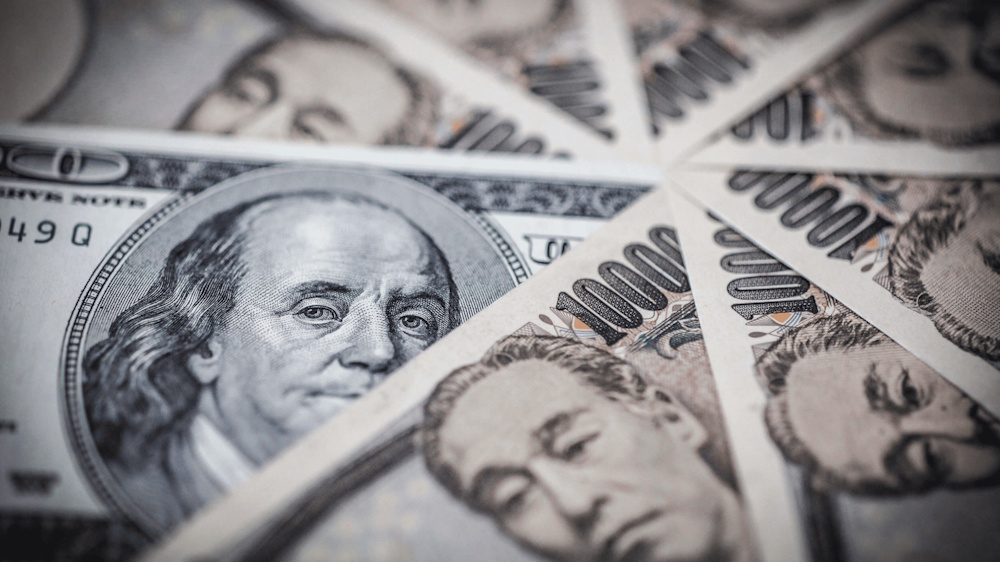USD/JPY continued its upward trend on Thursday, reaching a peak of ¥153.90, marking its highest point since February, following the Bank of Japan’s decision to maintain rates at 0.50% in a 7–2 vote. The yen experienced a decline against all major currencies as Governor Kazuo Ueda indicated that there is no predetermined trajectory for additional interest rate increases, despite expectations of rising inflation in Tokyo. The action came after a hawkish 25 bps rate cut from the Federal Reserve, leading investors to maintain their positions for further dollar strength as November approaches. The gap between the Fed’s careful easing approach and the BoJ’s extremely gradual normalization has led to increased yield spreads favoring the dollar, enhancing USD/JPY momentum as it approaches the ¥155.00 resistance level. The BoJ’s October policy meeting reaffirmed its ultra-gradual strategy, keeping the policy rate steady at 0.50% for the fifth consecutive session. Board members Hajime Takata and Naoki Tamura once more expressed their dissent, advocating for a 25 bps increase to 0.75% to avert the risk of inflation becoming entrenched. Even with consumer prices remaining elevated beyond the target for more than two years, the BoJ emphasized that the likelihood of “falling behind the curve” on inflation is still considered low. Revised GDP and CPI projections remained largely stable, with real GDP anticipated to increase by 0.7% in FY2026 and inflation estimated to hover around 2%, underscoring the central bank’s hesitance to expedite rate normalization. Current market sentiment indicates a 55% probability of a rate hike in December, as per swaps data. However, with wage negotiations anticipated in March, the consensus leans towards a complete 25 basis points increase by January 2026.
The Federal Reserve’s October meeting resulted in a 25 basis point rate cut, adjusting the target range to 3.75%–4.00%. However, Chair Jerome Powell’s comments emphasized a data-dependent approach instead of signaling a dovish shift. Powell cautioned that additional cuts “are not a foregone conclusion,” a statement that rekindled demand for the dollar. The U.S. Dollar Index has increased to 98.53, marking a three-month high, while 10-year Treasury yields have ascended to 4.11%. The interplay of elevated yields and robust U.S. growth projections remains a key factor supporting buying interest in USD/JPY. USD/JPY has technically confirmed a robust breakout through the ¥153.25–¥153.30 range, a level that has limited upward movement since early October. The action corresponds with a persistent bullish framework, as RSI (14) stays above 55 while avoiding overbought conditions, and the MACD indicator validates a bullish crossover. Immediate resistance is positioned at ¥155.00, a psychological threshold that corresponds with the 23.6% Fibonacci retracement of the rally from September to January of the previous year. A breakout above this level may pave the way to ¥156.40, whereas immediate support is found at ¥152.20 and ¥151.00, both of which are previous consolidation areas likely to draw in dip buyers.
Investors are now focusing on Japan’s forthcoming macroeconomic releases — Tokyo CPI, Industrial Production, and Retail Sales — which have the potential to reshape expectations for the BoJ’s concluding meeting of the year. The Tokyo CPI is anticipated to increase to 2.6% YoY from 2.5%, with retail sales likely to exhibit modest month-over-month growth. A robust CPI reading could bolster expectations for imminent rate hikes; however, considering the BoJ’s dovish stance, any potential rebound in the yen may be constrained. Conversely, disappointing data could reinforce the BoJ’s cautious approach and possibly drive USD/JPY past ¥155.00 as carry traders increase their long positions. The depreciation of the yen indicates a wider risk appetite, as global equities stabilized after the Trump–Xi meeting, which alleviated immediate U.S.–China trade tensions. The Nikkei 225 increased by 0.9%, marking a fourth consecutive session of gains, as foreign inflows into Japanese equities amounted to ¥312 billion this week. Nonetheless, the currency aspect presents a contrasting narrative — capital outflows from yen-denominated bonds persist as U.S. yields remain high. The increase in Japanese investors acquiring overseas debt indicates a sustained structural demand for dollars, reinforcing the bullish sentiment in USD/JPY.
Considering the current monetary divergence, favorable technical indicators, and strong U.S. economic data, USD/JPY seems ready to test the ¥155.00–¥155.50 range in the near term. A close above that range would indicate a breakout toward ¥157.20, levels not observed since mid-2022. However, if Friday’s Tokyo CPI print significantly exceeds expectations above 2.8%, short-term yen strength may lead to a retracement to ¥152.50. The current market structure is clearly bullish, with dips towards ¥152.00–¥152.30 expected to draw buying interest. According to the latest data and technical indicators, USD/JPY exhibits a Buy bias, with short-term targets set between ¥155.00 and ¥156.00, dependent on ongoing policy divergence and stable Treasury yield support.

